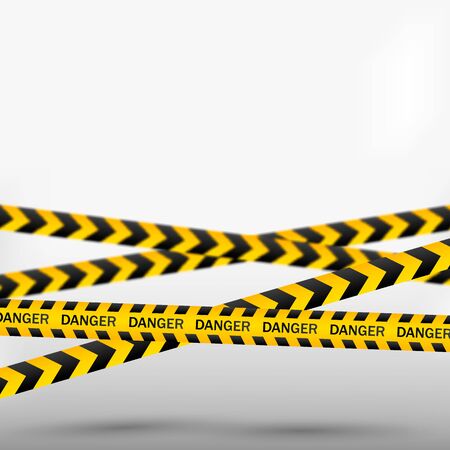Understanding Common Emergency Scenarios in the Wilderness
When venturing into America’s vast and varied wilderness, hikers and outdoor enthusiasts must be aware of the most frequent emergency scenarios they may encounter. Whether exploring solo or with a group, understanding these risks is critical for safety and effective response. In the United States, emergencies typically fall into three main categories: medical crises, severe weather events, and wildlife encounters. The table below highlights examples of each type and their unique challenges:
| Emergency Type | Common Examples | Potential Risks |
|---|---|---|
| Medical Crises | Sprains & fractures, dehydration, allergic reactions, hypothermia | Immobility, shock, life-threatening conditions if untreated |
| Severe Weather | Thunderstorms, flash floods, extreme heat or cold, sudden snowstorms | Hypothermia/heatstroke, disorientation, hazardous terrain |
| Wildlife Encounters | Bears, mountain lions, snakes, ticks (Lyme disease) | Injury from attack or bites, disease transmission |
Medical Emergencies on the Trail
Hikers frequently face injuries such as twisted ankles, broken bones, or heat exhaustion. Quick assessment and immediate action are essential—especially when miles from help. For those with allergies or chronic conditions like asthma or diabetes, preparedness can mean the difference between a manageable incident and a life-threatening situation.
Confronting Severe Weather Conditions
The U.S. wilderness is notorious for unpredictable weather. Thunderstorms can spark wildfires or cause flash flooding in national parks like Zion or Yosemite. Sudden temperature drops in places such as the Rockies pose risks of hypothermia even in late spring or early fall. Recognizing warning signs and having an evacuation plan are key for survival.
Navigating Wildlife Encounters
From black bears in Appalachia to rattlesnakes in the Southwest, wildlife encounters require calm decision-making. While most animals avoid humans, improper food storage or startling wildlife can provoke dangerous situations. Understanding local fauna and practicing Leave No Trace principles reduce risk significantly.
Takeaway for Hikers and Groups
No matter your level of experience or group size, being informed about these common scenarios—and knowing how to assess and respond—builds confidence and resilience on every adventure.
2. Risk Assessment: Identifying Hazards Before and During Your Hike
Recognizing potential dangers before you even set foot on the trail is a key skill for safe hiking in the United States. Whether you’re venturing solo or leading a group, comprehensive risk assessment involves both pre-hike planning and real-time situational awareness. Below, we break down how to utilize American trail ratings, tap into local resources, and interpret environmental cues to identify hazards effectively.
Trail Ratings: Understanding the System
American trails are commonly rated using systems such as the Yosemite Decimal System (YDS) or colored markers (green, blue, black). These ratings provide insight into the difficulty, required experience, and potential hazards of a given route. Familiarize yourself with these before choosing a trail:
| Rating System | Description | Common Hazards |
|---|---|---|
| Green (Easy) | Gentle slopes, well-marked paths | Slips, minor wildlife encounters |
| Blue (Moderate) | Steeper inclines, uneven terrain | Ankle injuries, exposure to weather |
| Black (Difficult) | Steep grades, technical sections | Falls, rockslides, navigation errors |
| YDS Class 1-2 | Walking to simple scrambling | Mild physical strain, tripping hazards |
| YDS Class 3-4 | Hand use required; exposure increases | Serious falls, route-finding issues |
| YDS Class 5+ | Technical climbing; ropes needed | High injury risk without proper gear/skills |
Leveraging Local Resources for Safety Insights
Before you hit the trail, consult local ranger stations, park websites, and recent trip reports. Rangers can provide up-to-date information on weather conditions, closures due to wildfires or flooding, wildlife activity (such as bear sightings), and other temporary hazards. Online forums and apps like AllTrails or Gaia GPS also offer real-time updates from fellow hikers.
Checklist: Pre-Hike Safety Prep Using Local Resources
- Check official park/trail websites for alerts or advisories.
- Call or visit the local ranger station for recent trail conditions.
- Review online trip reports for unexpected challenges.
- Download offline maps in case of poor cell coverage.
- Note emergency contact numbers specific to the area.
Environmental Cues: Reading Nature’s Warning Signs
Keen observation during your hike can be lifesaving. Watch for indicators such as darkening clouds signaling an incoming storm, sudden drops in temperature that might precede snow or hail, fresh animal tracks suggesting nearby wildlife activity, or eroded pathways that could mean landslide risk. Trust your senses—unusual sounds or smells may alert you to threats like approaching animals or fire.
Key Environmental Red Flags on U.S. Trails
- Thunderheads forming: Time to seek shelter from lightning.
- Muddy/slippery ground after rain: Increased slip and fall risk.
- Sparse vegetation on slopes: Potential landslide area.
- Piles of bear scat or claw marks on trees: High bear activity zone—take extra precautions.
- Loud crackling or smoke scent: Possible wildfire nearby—evacuate promptly.
A combination of understanding trail ratings, using all available local information sources, and staying alert to environmental cues will greatly reduce your risk exposure whether hiking alone or with companions. This proactive approach is essential for handling emergencies confidently in America’s diverse wilderness settings.

3. Solo Hiking: Staying Safe and Responding to Emergencies Alone
Heading into the wilderness alone is an empowering experience, but it comes with unique risks that require careful preparation and heightened self-reliance. As a solo hiker, your ability to assess risks, communicate your needs, and provide first aid to yourself can make all the difference in an emergency scenario.
Preparation Before You Go
- Route Planning: Map out your trail, noting water sources, bailout points, and difficult terrain. Share your itinerary with a trusted friend or family member.
- Packing Essentials: Carry extra food, water purification methods, weather-appropriate clothing, navigation tools (map, compass, GPS), and a robust first aid kit.
- Physical Readiness: Ensure you are fit for the challenge—know your limits and train accordingly before tackling more remote or demanding trails.
Communication Options for Solo Hikers
Reliable communication can be a lifeline when you’re hiking solo. Consider these options:
| Device | Pros | Cons |
|---|---|---|
| Cell Phone | Convenient; apps for tracking and SOS signals | No signal in many backcountry areas; battery life is limited |
| Satellite Messenger (e.g., Garmin inReach, SPOT) | Global coverage; two-way messaging; SOS features directly linked to rescue services | Monthly subscription cost; requires clear sky view for best results |
| Personal Locator Beacon (PLB) | No subscription fees; reliable one-way distress signal sent to search-and-rescue authorities | No messaging capability; single-use activation per emergency |
Self-Reliance in Emergency Scenarios
- Stay Calm: Panic can worsen any situation. Take deep breaths and assess the scenario logically.
- Injury Management: Know how to splint fractures, clean wounds, and recognize signs of hypothermia or dehydration.
- Shelter and Warmth: Always carry an emergency bivy sack or space blanket to protect against exposure if you’re immobilized overnight.
- Signaling for Help: In addition to electronic devices, pack a whistle and mirror for visual or audible signals.
First Aid Skills Every Solo Hiker Should Master:
- Treating cuts, sprains, blisters, insect bites, and burns
- Recognizing symptoms of altitude sickness and dehydration
- Caring for shock or allergic reactions (including carrying antihistamines or an epinephrine auto-injector if needed)
- Makeshift bandaging and immobilization techniques using available materials
The key takeaway for solo hikers is preparedness—both mentally and physically. With the right planning, gear, and skills, you’ll not only boost your chances of managing emergencies but also enjoy the confidence that comes from true self-reliance in America’s great outdoors.
4. Group Scenarios: Coordinated Response and Leadership
When hiking with a group, emergency scenarios require a coordinated approach to risk management and response. Unlike solo situations, group dynamics introduce both opportunities and challenges. Effective leadership, clear communication, and well-defined roles are crucial for ensuring everyone’s safety.
Leadership Roles in Emergency Situations
Strong leadership is the backbone of a successful group response during emergencies. The designated leader—or leaders—should possess experience in outdoor safety, first aid, and decision-making under pressure. Their responsibilities include assessing the situation, communicating clearly with all members, and making informed decisions quickly.
Task Delegation for Efficient Response
Delegating tasks based on group members’ strengths can save precious time and increase the chances of a positive outcome. Assigning specific roles ensures that necessary actions are taken simultaneously rather than sequentially. Below is an example of how task delegation can be structured:
| Role | Responsibility |
|---|---|
| Leader | Overall coordination, situational assessment, decision-making |
| Medical Responder | First aid treatment, monitoring injured person(s) |
| Communicator | Contacting rescue services, relaying information between group members |
| Scribe/Navigator | Documenting events/times, managing maps and GPS, tracking location |
| Moral Support/Lookout | Supporting affected individuals emotionally, keeping watch for dangers |
Group Safety Protocols to Follow
Establishing safety protocols before hitting the trail is essential. These should include:
- Pre-hike Briefings: Discuss emergency procedures, assign initial roles, and review communication strategies.
- Buddy System: Pair up hikers to ensure no one is left alone or unaccounted for during an incident.
- Regular Check-ins: Pause periodically to account for all members and reassess risk factors such as weather changes or injuries.
- Crisis Communication Plan: Agree on signals (whistles, hand signs) for urgent situations where verbal communication may be compromised.
- Evacuation Strategy: Know the quickest safe routes out of the area and have contingency plans if paths become impassable.
The Importance of Training and Practice
Groups that regularly practice emergency drills respond more effectively when real incidents occur. Consider organizing mock scenarios to rehearse responses to common threats like falls, sudden illness, or getting lost. This not only builds confidence but also uncovers gaps in preparedness.
5. Emergency Communication and Rescue Protocols in the U.S.
When an emergency unfolds during a hiking or climbing expedition in the United States, knowing how to communicate distress and initiate rescue operations is critical. The American system offers various tools and protocols specifically tailored for both solo adventurers and groups. Understanding these resources—and how they are coordinated—can make the difference between a successful rescue and a prolonged crisis.
Utilizing Emergency Tools: 911, PLBs, and Satellite Devices
In most areas of the U.S., dialing 911 is the primary method for summoning help. However, in remote wilderness locations, cell service may be unavailable. For these scenarios, Personal Locator Beacons (PLBs) and satellite messengers (like Garmin inReach or SPOT devices) have become standard safety gear among serious hikers and climbers. These devices send your GPS coordinates directly to emergency responders via satellite networks, ensuring help can be dispatched even when off-grid.
| Tool/System | How It Works | Best Use Scenario |
|---|---|---|
| 911 | Calls connect to local emergency dispatch for police/fire/EMS response | Accessible areas with reliable cell coverage |
| PLB (Personal Locator Beacon) | Sends distress signal & GPS location via satellite to rescue authorities | Remote backcountry with no cell service |
| Satellite Messenger (e.g., Garmin inReach) | Two-way messaging & SOS function using satellite network | Extended wilderness trips; communication with family/rescuers |
Following National Park Service (NPS) Guidelines
The National Park Service maintains strict guidelines for reporting emergencies on federal lands. In many major parks, ranger stations monitor radio frequencies and provide signage with emergency contact instructions at trailheads and visitor centers. Always take note of this information before setting out.
Key Steps When Summoning Help:
- If calling 911: State your location clearly using GPS coordinates if possible, describe the emergency, number of people involved, and any immediate hazards.
- If activating a PLB or sending an SOS from a satellite device: Stay put unless remaining is unsafe—rescuers use your transmitted location as their target.
- Follow all instructions provided by dispatchers or NPS personnel; they may offer life-saving guidance until help arrives.
What to Expect From American Search and Rescue Operations
Search and rescue (SAR) teams in the U.S.—often comprised of trained volunteers, park rangers, sheriff’s deputies, or specialized units—are highly skilled in wilderness medicine, technical rescue, and navigation. Response times depend on weather, terrain, time of day, and remoteness. Once notified, SAR will coordinate with local agencies for helicopter extractions if needed or ground teams for evacuation.
Quick Tips:
- Remain calm and conserve energy.
- Make yourself visible with brightly colored clothing or gear.
- Signal rescuers with a whistle or mirror if you hear helicopters approaching.
Navigating emergencies in the U.S. outdoors requires knowledge of both personal technology and public rescue protocols. By preparing with the right tools and understanding what to expect from American SAR services, adventurers maximize their chances for a safe outcome when it matters most.
6. After the Incident: Reporting and Learning from Emergencies
Dealing with an emergency on the trail, whether alone or with a group, doesn’t end once the immediate danger has passed. Post-incident steps are crucial for personal growth, group learning, and contributing to safer outdoor communities across the United States. Here’s how you can effectively report, debrief, and leverage American resources to improve safety for your future hikes.
Steps for Post-Incident Reporting
Proper documentation and reporting ensure accountability, help identify risks, and may support rescue operations or insurance claims. Here’s a quick guide:
| Step | Action | US Resources/Contacts |
|---|---|---|
| 1. Immediate Documentation | Write down details: time, location (GPS if possible), people involved, weather conditions, sequence of events. | N/A (personal notes or voice memos) |
| 2. Notify Authorities | If not already done, inform local law enforcement, park rangers, or Search & Rescue teams about the incident. | 911, National Park Service (NPS), local sheriff’s office |
| 3. Submit Official Reports | If in a national/state park or organized event, complete required incident forms. | NPS Incident Reporting System, State Park websites |
| 4. Insurance Claims | Contact your health/travel/outdoor activity insurer with documented evidence. | Your insurance provider |
| 5. Community Sharing | Share lessons learned with hiking forums or clubs to help others avoid similar risks. | Appalachian Trail Conservancy, REI Co-op forums, Facebook hiking groups |
Debriefing: Reflect and Discuss with Your Group
If you were with others during the emergency, set aside time soon after the incident for a structured debrief. This process strengthens team dynamics and uncovers areas for improvement:
- Create a Safe Space: Encourage honest sharing without blame.
- Review the Timeline: Reconstruct what happened step by step.
- Identify What Worked: Highlight effective responses and good decisions.
- Discuss Mistakes: Examine missteps objectively to find solutions.
- Document Action Items: Agree on changes for next time—gear checks, communication plans, training needs.
Leveraging American Resources for Ongoing Learning
The United States has a robust network of organizations dedicated to outdoor safety and education. Take advantage of these resources:
- National Park Service Safety Resources: Learn about common incidents and best practices for each region.
- REI Co-op Classes & Workshops: Join local workshops on wilderness first aid or risk management.
- American Alpine Club Accidents Database: Study real-life case studies from other hikers and climbers.
- The Mountaineers: Participate in courses or read published safety reports from experienced mountaineers.
- Outdoor Alliance & Local Hiking Clubs: Connect with fellow hikers to exchange knowledge and advocacy information.
Cultivating a Culture of Continuous Improvement
The most important outcome after any emergency is using what you’ve learned to make future adventures safer—for yourself and others. By prioritizing honest reporting, open debriefs, and active engagement with America’s outdoor community resources, you’ll not only recover more confidently but also contribute to a safer hiking culture nationwide.

